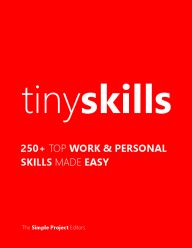On October 25, 2016 By thesuccessmanual Topic: Remarkable, Quotes, Mba
This guide belongs to 100 Ways To Be Being Remarkable Series, a special project that brings you business and self-development advice from The Success Manual.
The Anatomy is our destiny.
- Sigmund Freud
Did you know that 55% of communication is visual (body language, eye contact) and 38% is vocal (pitch, speed, volume, tone of voice)? That means only 7% involves your actual words. And when the spotlight is on you- whether one-on-one in an interview or when making a presentation to a large group - you need to communicate effectively on all levels.
EXAMPLES OF BODY LANGUAGE
Brisk, erect walk Confidence
Standing with hands on hips Readiness, aggression
Sitting with legs crossed, foot kicking slightly Boredom
Sitting, legs apart Open relaxed
Arms crossed on chest Defensiveness
Walking with hands in pockets, shoulders hunched Dejection
Hand to cheek Evaluation thinking
Touching, slightly rubbing nose Rejection, doubt lying
Rubbing the eye Doubt disbelief
Hands clasped behind back Anger frustration, apprehension
Locked ankles Apprehension
Head resting in hand, eyes downcast Boredom
Rubbing hands Anticipation
Sitting with hands clasped behind head, legs crossed Confidence, superiority
Open palm Sincerity, openness, innocence
Pinching bridge of nose, eyes closed Negative evaluation
Tapping or drumming fingers Impatience
Steepling fingers Authoritative
Patting/fondling hair Lack of self-confidence; insecurity
Tilted head Interest
Stroking chin Trying to make a decision
Looking down, face turned away Disbelief
Biting nails Insecurity, nervousness
Pulling or tugging at ear Indecision
No eye contact Lying
Hands touching their face, throat & mouth Lying
Leaning your body towards another person Showing interest
Sign of Dominance, Power
Feet on desk, Piercing eye contact, Hands behind head or on hips, Palm-down handshake , “Steepling” of the finger, Standing while other is seated
Sign of Submission, Nervousness
Fidgeting, Minimum eye contact, Hands to face, hair, etc.
Palm-up handshake, Throat clearing
Sign of Disagreement, Anger, Skepticism
Red skin , Finger pointing, Squinting eyes, Frowning, Turning away, Crossing arms or legs
Sign of Boredom, Lack of Interest
Avoiding eye contact, Playing with objects on desk
Staring blankly, Drumming on table
Picking at clothes, Looking at watch, door, etc.
Sign of Uncertainty, Indecision
Cleaning glasses, Looking puzzled, Putting fingers to mouth, Biting lip, Pacing back and forth,Tilting head
Sign of Suspicion, Dishonesty
Touching nose while speaking
Covering mouth
Avoiding eye contact
Moving away
Crossing arms or legs
Sign of Evaluation
Nodding , Squinting, Putting index finger to lips ,
Tilting head slightly, Stroking chin
Sign of Confidence, Cooperation, Honesty
Leaning forward
Opening arms and palms
Maintaining great eye contact
Keeping feet flat on floor
Smiling
Moving with counterpart’s rhythm
- Adapted from a guide by Peter Barron Stark & Associates
VISUAL CUES OF CONFIDENT PEOPLE
- Make steady eye contact. Don't blink excessively.
- Do not be afraid of coming into your personal space/touch you when making a point. Do not instinctively flinch when you do the same.
- Do not fidget, esp. with your hands.
- Be comfortable with silence. Do not talk on endlessly, but instead say what you have to say, and then cede control of the conversation back to others.
COMMON BODY LANGUAGE MISTAKES, AND WINNING TECHNIQUES FOR AVOIDING.
Eyes
Common mistake: Taking your eyes off of listeners.
Do you read directly from a PowerPoint presentation instead of addressing the audience? In a one-on-one conversation, do you glance to the side, down at your feet, or at the desk? Ever catch yourself looking over the shoulder of the person you're talking to?
The winning technique: Keeping your eyes on your audience.
If you're giving a presentation, commit your material to memory so you can connect instead of read. In small groups or meetings, maintain eye contact equally with everyone in the room. During one-on-one conversations, keep your eyes on the person you are speaking to 80% to 90% of the time.
Blocking
Common mistake: Putting something between you and your listener(s).
Crossing your arms, standing behind a podium, standing behind a chair, and talking to someone from behind a computer monitor are all examples of blocking.
The winning technique: Staying “open.”
Keep your hands apart and your palms up, pointed toward the ceiling. Remove physical barriers between you and your listeners.
Hands
Common mistake: Not using them.
Keeping your hands in your pockets or clasped together makes you seem stiff, stilted, and formal. It conveys insecurity, whether or not you're insecure.
Hands
Using complex hand gestures.
Engaging both hands above the waist is an example of a complex hand gesture that reflects complex thinking and gives the listener confidence in the speaker. Just watch such charismatic speakers as Bill Clinton, Colin Powell, Barack Obama, or Tony Blair.
ANIMATION
Common mistake: Standing or sitting perfectly still.
Ineffective speakers barely move, staying in one spot during a presentation.
The winning technique: Animate your body, not your slides.
Great speakers get up and move, and when appropriate, mingle with the audience, like Cisco Chief Executive John Chambers, who often walks into the audience as he speaks.
Poor Posture: Slouching, leaning back, or being hunched over.
Poor posture is often associated with a lack of confidence and can reflect, or be presumed to reflect—a lack of engagement or interest.
Posture: Keeping your head up and back straight.
Also, lean forward when seated. By sitting toward the front of your chair and leaning forward slightly, you will look far more interested, engaged, and enthusiastic.
- Notes from a Businessweek Article
CATCH PEOPLE LYING
Body Language & Facial Expressions
- If a person is telling the truth, when they smile it will involve the whole face, including the eyes. If a person is lying, when they smile it will only involve the mouth. Look at the eyes; they are always a give-away.
- A liar's physical expression will appear stiff and limited, with a lack hand and arm actions. Any limb movements will tend to be near their own body, so that they take up less space.
- Touching the throat, ear, nose, mouth, and also the face in general, are all signs of lying
- A liar will tend to avoid eye contact
Contradiction & Emotional Gestures
- Delay between verbal expressions and facial expressions. For example, if person receives a gift they didn't really want, they will say “I love it!” but there will be a pause before they smile.
- Verbal statements and gesture/expressions don't match. For example, if someone says “I love you” whilst frowning.
Reactions & Interactions
- If challenged, a guilty person will become defensive, whereas an innocent person will usually become offensive.
- Someone who is lying will find it difficult to face their accuser, so may turn away
- They may unconsciously place objects between themselves and you (e.g. tea cup, book, etc.).
- Using the same words as you to answer your question, for example, if asked, “Did you steal my pen?” they will respond with, “No, I did not steal your pen.”.
- Statements which contain contractions are more likely to be truthful, for example, “I didn't do it” as opposed to “I did not do it”
- A liar may imply things rather than make direct statements
- They may over-explain themselves, giving too many reasons and adding too many unnecessary details to try to convince you
- They may leave out pronouns and speak in a more monotonous tone of voice
- Sentences may be confused, garbled and spoken quietly, with poor grammar and syntax
Other Signs of Lying:
1. If you suspect someone is being untruthful, then alter topic of a discussion swiftly. A liar will follow along gladly and become more relaxed. A guilty person will want the subject to be changed, whereas an innocent person may become confused by the change of topic.
2. Avoidance of the subject by means of humor or sarcasm
- Adapted from a guide by Marcus Edward John Cross
Also Read
How to be a great communicator
A simple guide to becoming a Great Listener
How To Talk Well and Impress Everyone
How to be remarkable #51: Be a great public speaker
The Networker's Bible: 75+ tips on connecting and influencing people
If you liked this article, please bookmark it on Delicious or share on Twitter. Thanks, friends. Follow us on Twitter. http://twitter.com/rulesoflife
We don't recommend any other guide than our very own The Success Manual - Encyclopedia of advice to 130 most important skills. https://www.thesuccessmanual.in/all-in-one-skills-guide

